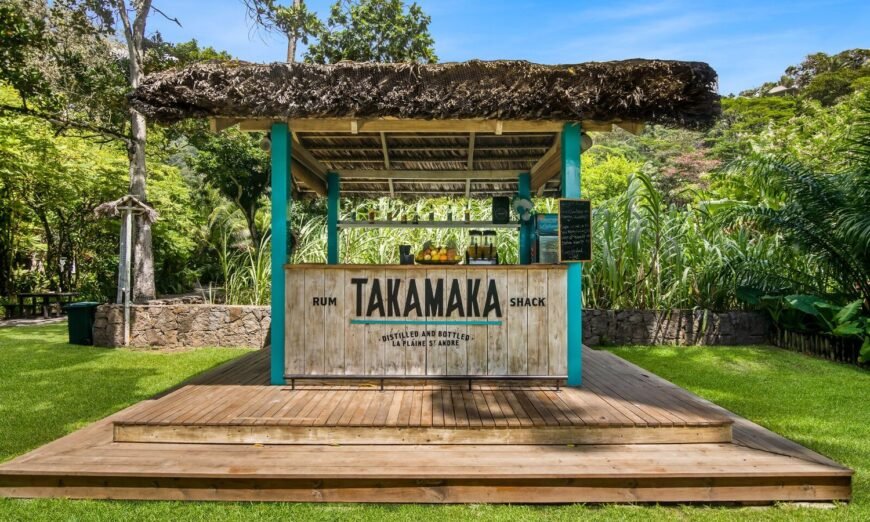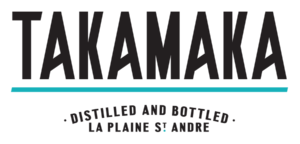
La Plaine St. André is more than a distillery! It’s an iconic heritage site that is home to our very own museum, medicinal garden, historical ruins and of course, our two giant Aldabra tortoises – Taka and Maka.
You can discover more about Seychelles rum, land and culture. Join one of the guided or self-guided tours, and stay for a drink and a bite from our Rum Shack and Food Truck.
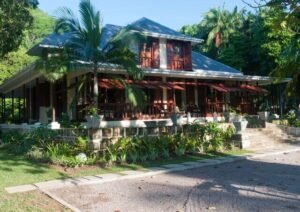
THE HISTORY
La Plaine St André has been a part of the Takamaka story for over a decade, but its history dates back to the time of the first settlers in Seychelles. Built by the Jorre de St. Jorre family in 1792, La Plaine St André was a plantation estate set amongst exotic gardens.
Named after Jean-Francois Jorre de St. Jorre’s birth town in Réunion, La Plaine St André covered over 60 acres of land at its peak and played a big role in the agricultural economy of the Seychelles in the 1900s, growing cinnamon, vanilla, coconut and patchouli for export to Europe.
Through the years, La Plaine St André has filled many functions as a coconut mill, national monument, a boat repair yard, regal car garage, eco museum, restaurant and even an art gallery. It has burnt down and it’s been rebuilt and at one point became neglected when funding was sparse.
In 2008, after four years of tenacious campaigning, Trois Frères Distillery was granted a 50 year lease on La Plaine St. André and spent the next two years lovingly and carefully restoring the grounds. Together with the Seychelles Heritage Foundation, Richard and Bernard continue to preserve and promote the historical and cultural role of La Plaine St.André while also making it an inviting and laid-back place for visitors to discover more about Seychelles rum.
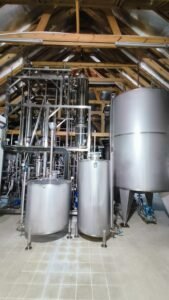
From What & How They Make Rum
- Cane Rum
- Molasses Rum
- Foursquare
- Pressed Rum
Making Rum in the Seychelles:
The Seychelles has never had a sugar industry, the Takamaka team had recently reached out to Antoine Marie Moustache who is the former Permanent Sectary to the Department of Agriculture. She kindly was able to share from the “Annual report on Agriculture and Crown lands” authored by P.R. Dupont the first recorded reference to sugar in the Seychelles was in 1919. The report went on to elaborate that “no sugar was manufactured in the colony and the culture of sugar cane was restricted to about 20 acres because of a tax on acreage.”
While there has always been a small amount of cane gown, it was almost exclusively used to make “Baka”, a cane juice beer of sorts. The team have spent over a decade supporting a collective of local farmers enabling them to add to their income by planting sugar cane. The team support sustainable farming practices by anchoring the growers to a no-pesticides program, returning the bagasse for use as animal feed and providing large tanks for rainwater collection. Takamaka also act as non-official consultants suggesting cane variants and harvesting schedules for free.
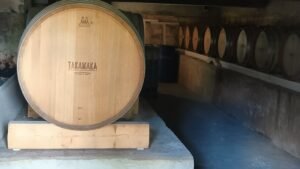
Today they have access to five genetically different types of cane which vary in colour from green to striped green and yellow, red to the purple “kann di vin” or wine cane, which is the rarest and sweetest one in the Seychelles. The team actively support cultivation of this specific variant including growing it within their own Clos at La Plaine St Andre. The cane that is grown in the Seychelles has distinct terroir notes from the island’s unique granitic soil which is mixed with beach sand.
Seychelles Cane rum therefore remains an artisanal product with Takamaka historically never having been able to produce more than 4,500 litres of finished cane rum in a year. However – the decade of support is starting to pay off as more farmers have started to plant both on Mahe but now also on La Digue and the team have set their sights to achieve 7,000 litres of Seychelles Cane Rum per year by 2024.
……………………………………………………………………………………………………………………………………………………………….
Takamaka Rum Distillery Pointe Au Sel, Seychelles Phone: +248 4 283 737 Email: FRANCIS@TAKAMAKA.SC www.takamakarum.com

